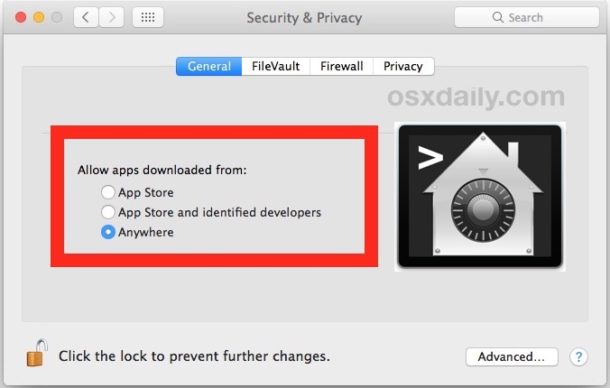- Click Allow From Anywhere when prompted. Doing this will allow you to install software from unsigned developers without having to confirm from within this menu. If you don't install any unsigned software within 30 days, you'll have to re-enable this settings. Click the lock icon if you'd like to prevent further changes.
- Choose what type of apps that you want to let users install. Note: Only the primary account user can install apps and extensions from the Google Play store. Allow all other apps and extensions—Users can install all apps and extensions from the Google Play store and Chrome Web Store except the ones that you block.
Accessing, controlling, or viewing information on your Mac can be done with a built-in Terminal or any other SSH app using your username and IP address. Allow others to access your computer using Apple Remote Desktop. With macOS remote Mac access and control is even easier. To set up it: Go to Menu System Preferences Sharing. Today there are lots of apps for Mac that use the internet access as the most of the apps installed on the device works on the internet. But the worst thing that you can face with these apps is the slow internet and sometimes these apps may distract you lot. And at that time you must be looking for any solution to handle this to restrict. Accessing, controlling, or viewing information on your Mac can be done with a built-in Terminal or any other SSH app using your username and IP address. Allow others to access your computer using Apple Remote Desktop. With macOS remote Mac access and control is even easier. To set up it: Go to Menu System Preferences Sharing.
Remote for Mac app is helper tool that enables apps on your iPhone or iPad to control your Mac computer remotely.downloadPreferences
Auto-start at login Enabling this option will launch the app at loginStop on Fast User SwitchingEnabling this will disable the app if you switch to a different account on your MacHide icon on launch
Enabling this option will launch the app at loginStop on Fast User SwitchingEnabling this will disable the app if you switch to a different account on your MacHide icon on launchAllow An App To Internet Mac Computer
Enabling this will hide the icon when app launches, good if you like your menu bar clean or you installed the app on your friends / children Mac and you want to prank them :)Require authorizationEnabling this option will ask you every time new device tries to connect to your Mac if you want to allow or deny it's accessThis list shows all devices that tried to connect to your Mac, date showing latest connection. Here you can change device authorization status and toggle between to Allow or Deny it's access.Here you can add your custom actions using Apple Script that will show up in the app. If you want to hide some of the scripts without deleting them entirely - you can uncheck the box next to them.macOS 10.14 - Mojave
Mojave has introduces a new security model which can cause some issues with how the app works.Please make sure you have granted Remote for Mac permissions to control your Mac using Apple Events and Accessibility features.
macOS 10.15 - Catalina
In order to enable Live View feature you have to grant Remote for Mac permission to capture your screen.
Apple has introduced a number of features designed to protect users from malware in OS X, but these tools occasionally go too far when trying to save people from themselves.
TL;DR:If you have an app from an unidentified developer and you're sure the app is safe, you can force it to run by right clicking (or command-clicking) the app and choosing 'Open' from the context menu.
OS X's Gatekeeper feature — introduced with OS X Mountain Lion — places restrictions on which apps can be run on a Mac based on the avenue through which the apps were acquired. There are three tiers: apps which are distributed by registered developers through the Mac App Store, apps which are distributed by registered developers outside of the Mac App Store, and apps which are not made by registered developers.
Gatekeeper distinguishes between the latter two based, broadly, on whether the app has been signed with a legitimate Apple-issued signing key.
By default, Gatekeeper is configured to allow apps from the Mac App Store and from registered developers. Users can make this more or less strict:
- Open System Preferences
- Open the 'Security & Privacy' pane
- Select the 'General' tab
- Click the lock icon in the lower-left corner and enter an administrative username and password
- Select one of the three available levels under 'Allow apps downloaded from:' and close the preference pane
Unless you choose to allow apps downloaded from anywhere, OS X will warn you against opening apps that aren't signed: you'll see a dialog box that says ' can't be opened because it is from an unidentified developer,' and clicking OK will simply close the dialog.
If you're sure the app is safe, you don't need to alter your security preferences to open it — there's a faster workaround.
Right click (or command-click) on the app and select 'Open' from the context menu. This will present a slightly different dialog box: this time, you'll be presented with an 'Open' button that will let you force OS X to run the app.
Remember: only do this if you're sure the app is from a reputable developer and has not been tampered with.
Allow Apps Downloaded From Mac
AppleInsider has affiliate partnerships and may earn commission on products purchased through affiliate links. These partnerships do not influence our editorial content.